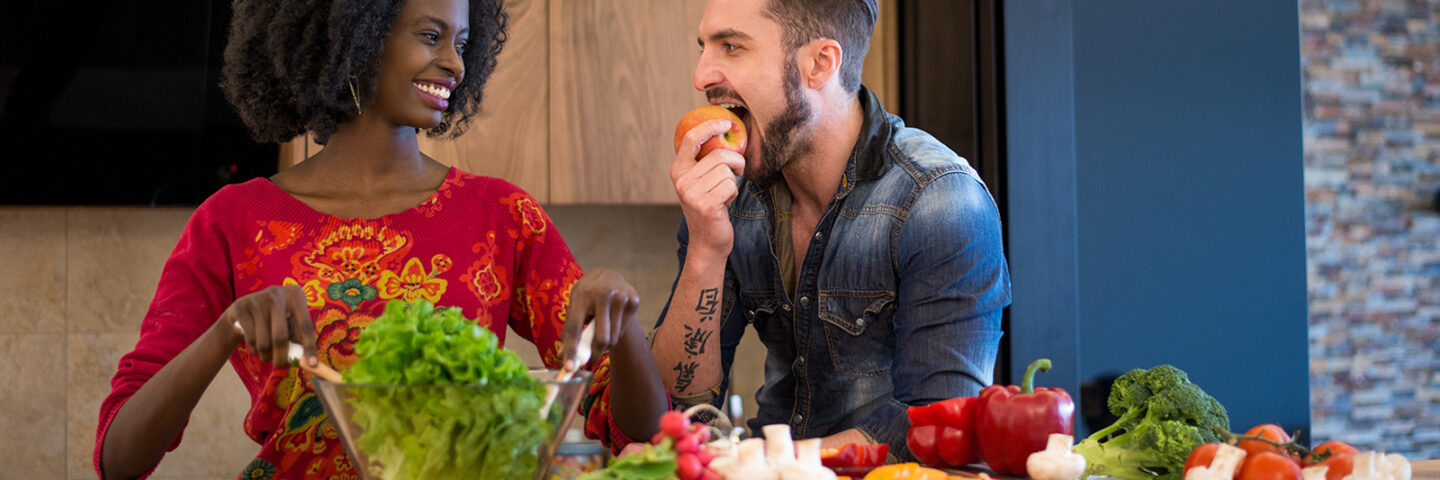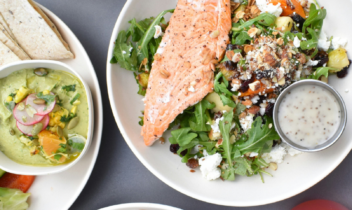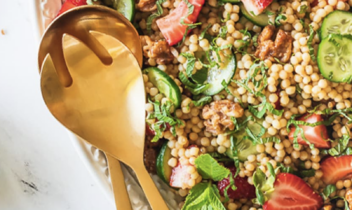
How can I plan meals for just one or two people?
Answer
It’s great that you’re thinking ahead and planning your meals! This can help reduce food waste, in turn saving money. It also saves time. That’s why I advocate for flexible meal planning as a form of self-care.
But scaling back can be challenging if you’re only cooking for one or two people. Here are some strategies to keep in mind.
Shop Smart
Ditch the outdated advice to “shop the perimeter” of your grocery store and venture into the aisles to find convenient, affordable, and nourishing foods. By sourcing a variety of both fresh and shelf-stable ingredients, you’ll have more options to avoid boredom. Plus, you can rely on some of the packaged items when you don’t have the time or desire to cook a full meal from scratch.
Here’s a list of some food categories to include:
- Fruit (fresh, frozen, canned, dried, and 100% juice)
- Vegetables (fresh, frozen, canned, and 100% juice)
- Proteins (plant- or animal-based)
- Dairy (depending on personal preference and tolerance)
- Whole grains
- Beverages
- Snacks or convenience options
Adjust Your Recipes
While many recipes are written for four or more servings, most can be easily reduced to two or fewer servings. If you go this route, keep in mind that cooking times may change when you’re preparing less volume. You may also need to adjust seasonings, such as salt and dried herbs, and use less when preparing fewer servings.
Many online recipe archives and food blogs now feature a tool that lets you pre-select how many servings you want to make. The ingredient list will automatically update to tell you exactly how much you need, making it much easier to replicate the original recipe.
However, while this might work well for certain types of recipes, others don’t convert quite as well. If you’re preparing recipes for soups, stews, casseroles, or other mixed dishes, you might try this next strategy as an alternative to reducing the total servings.
Show Some Love for Leftovers
“Leftovers” can conjure thoughts of reheated, tasteless meals, but with proper storage you can preserve the quality and flavor of your original meal. If you can, invest in storage containers with a tight seal – this will help you avoid spills or off-flavors infiltrating into your fridge. Let your hot foods cool before transferring to storage containers, but be sure to refrigerate to 40 degrees F or less within two hours to reduce the risk of food-borne illness.
If you plan to eat leftovers within a few days, the fridge is your friend. Otherwise, clear some room in your freezer. Most frozen leftovers are fine to use within 3 to 6 months. However, if you’re prone to losing track of what’s inside and when it went in, add a label to help you stay organized.
To reheat, let frozen foods thaw overnight in the refrigerator. The microwave, oven, or stovetop can all be efficient ways of reheating leftovers. You can use some culinary creativity to inject new life into these meals using additional vegetables, toppings, sauces, and fresh or dried herbs.
Not only can leftovers be nourishing and filling, but using this approach can also save you time and energy. I love using the “cook once, clean once” strategy in my kitchen.
Find What Works for You
There are no hard and fast “food rules” about what home cooking should look like. I encourage you to experiment with meal planning to learn what works best.
Think outside the box and include opportunities for takeout, restaurant meals (if deemed safe for your area) or shared meals (unless advised otherwise for safety precautions). This can alleviate the pressure of needing to prepare every single meal for the entire week. It can also help you avoid boredom or burnout if you find yourself stuck in a food rut.
For more, check out the “Cooking for Two” archive for some recipe inspiration!


